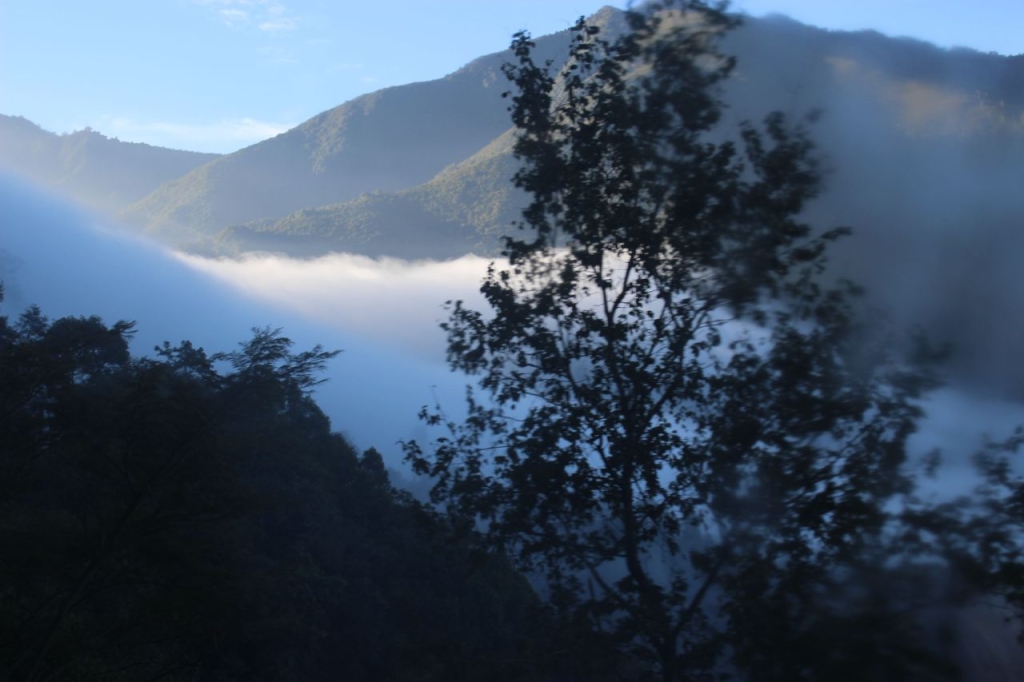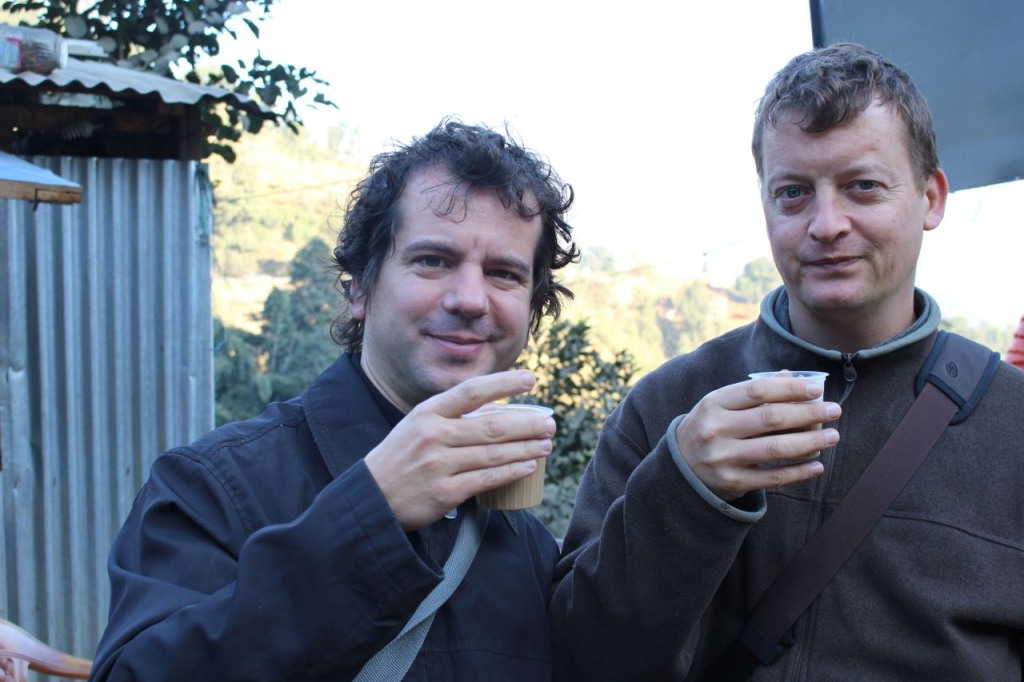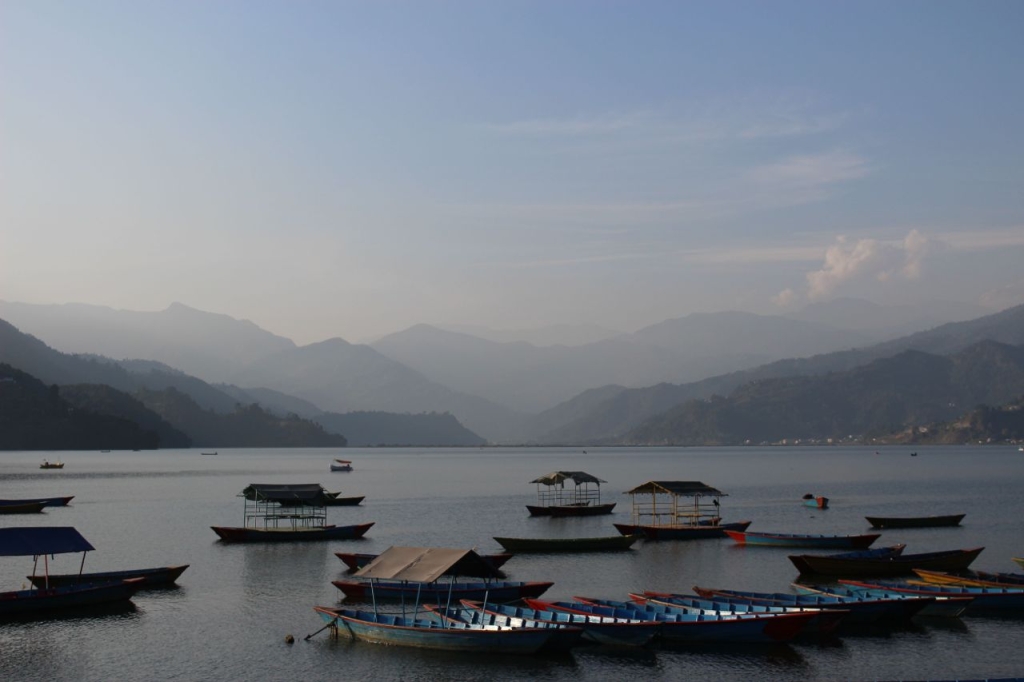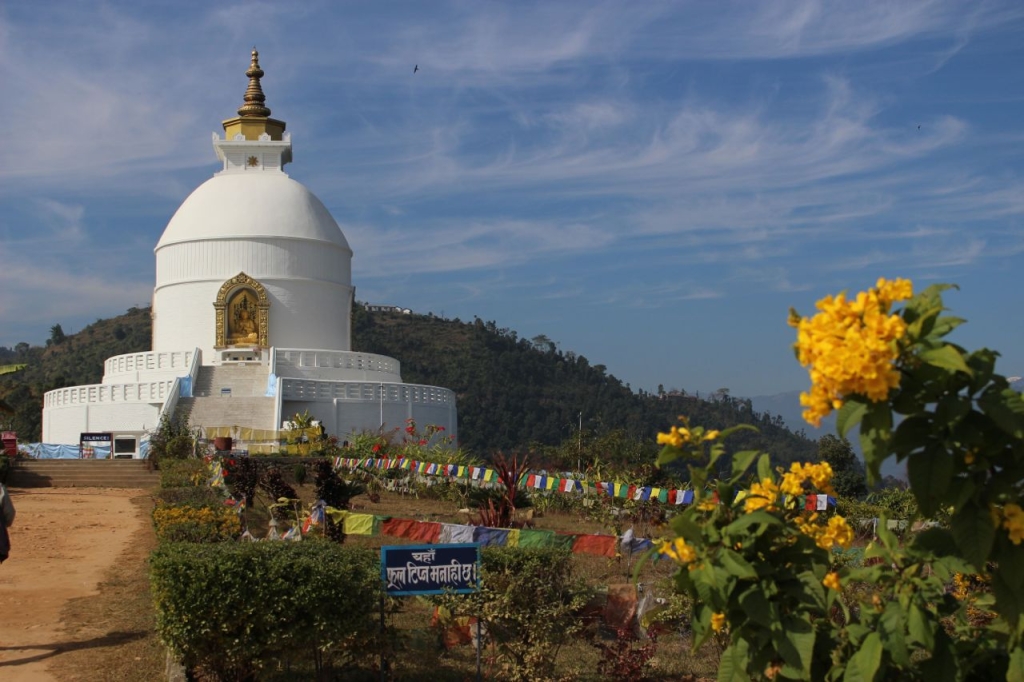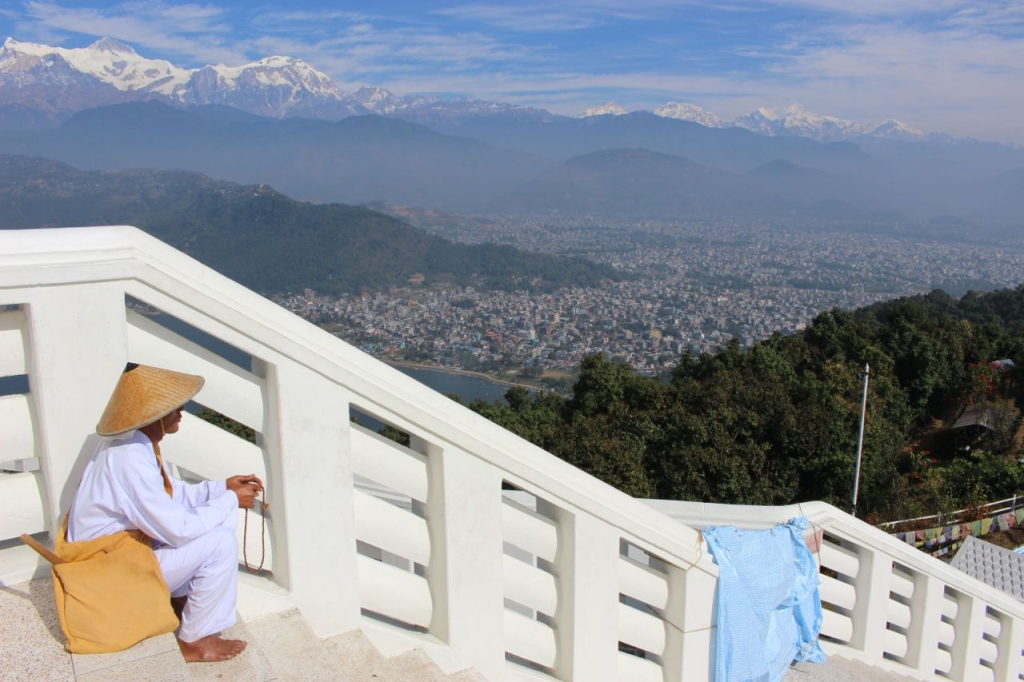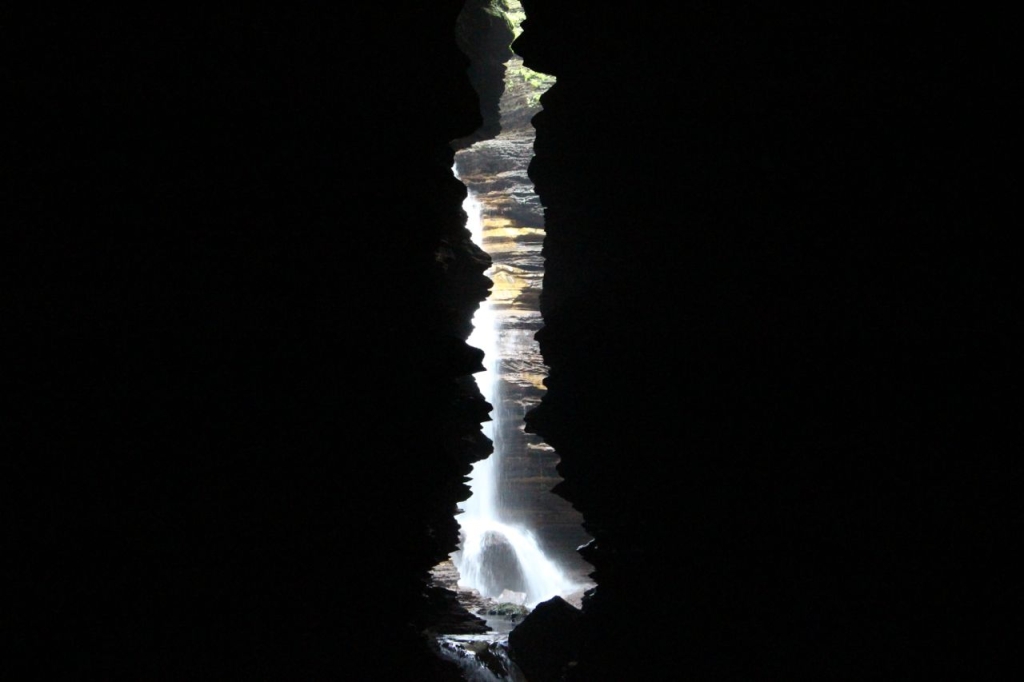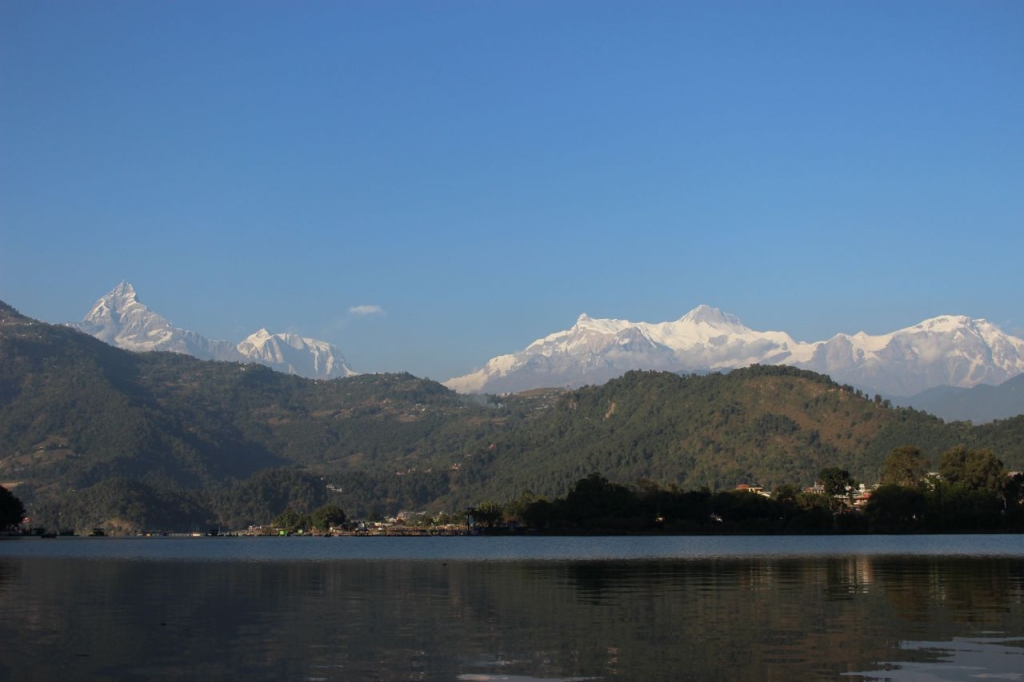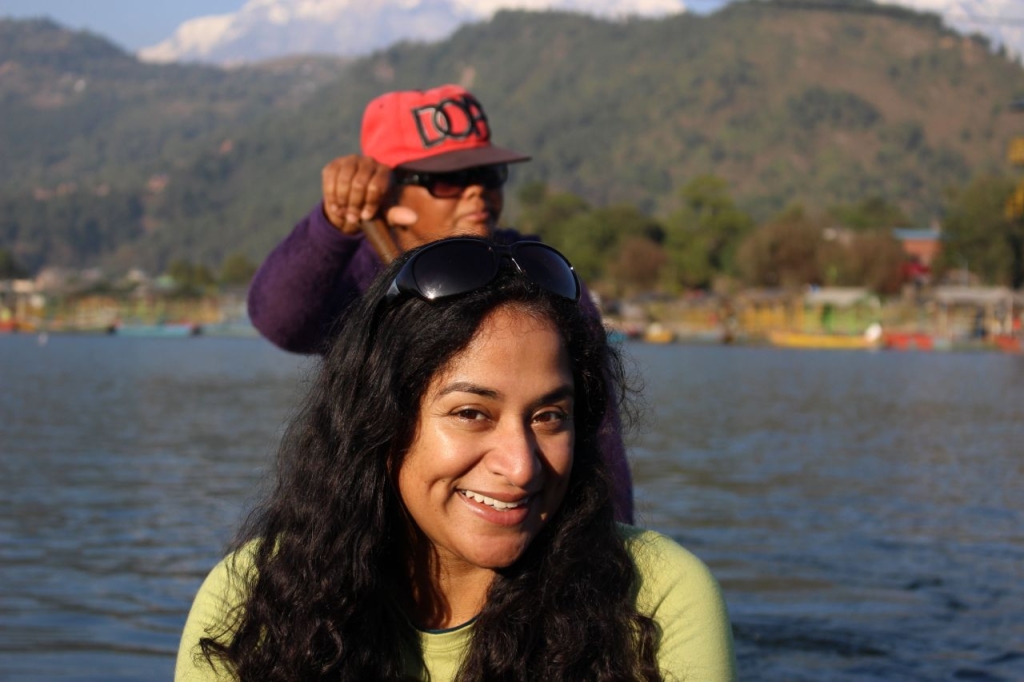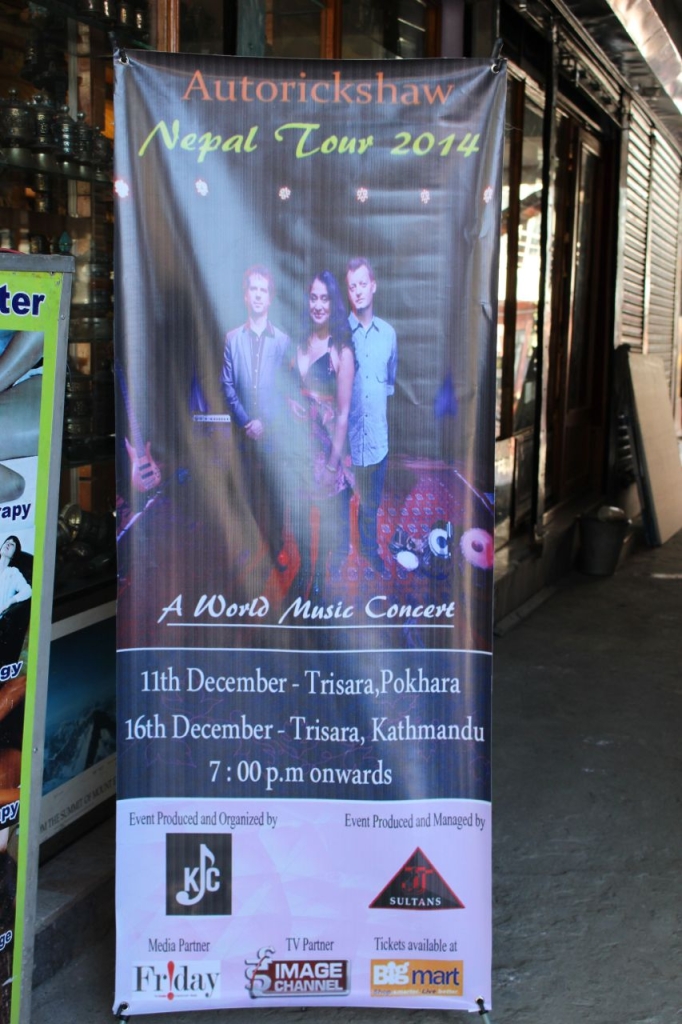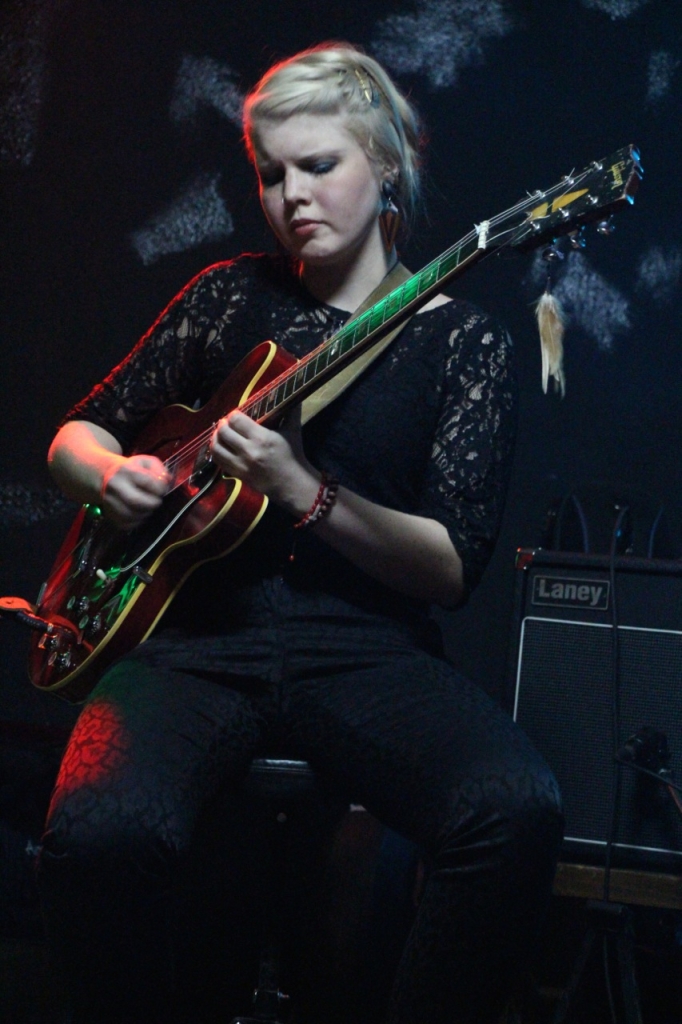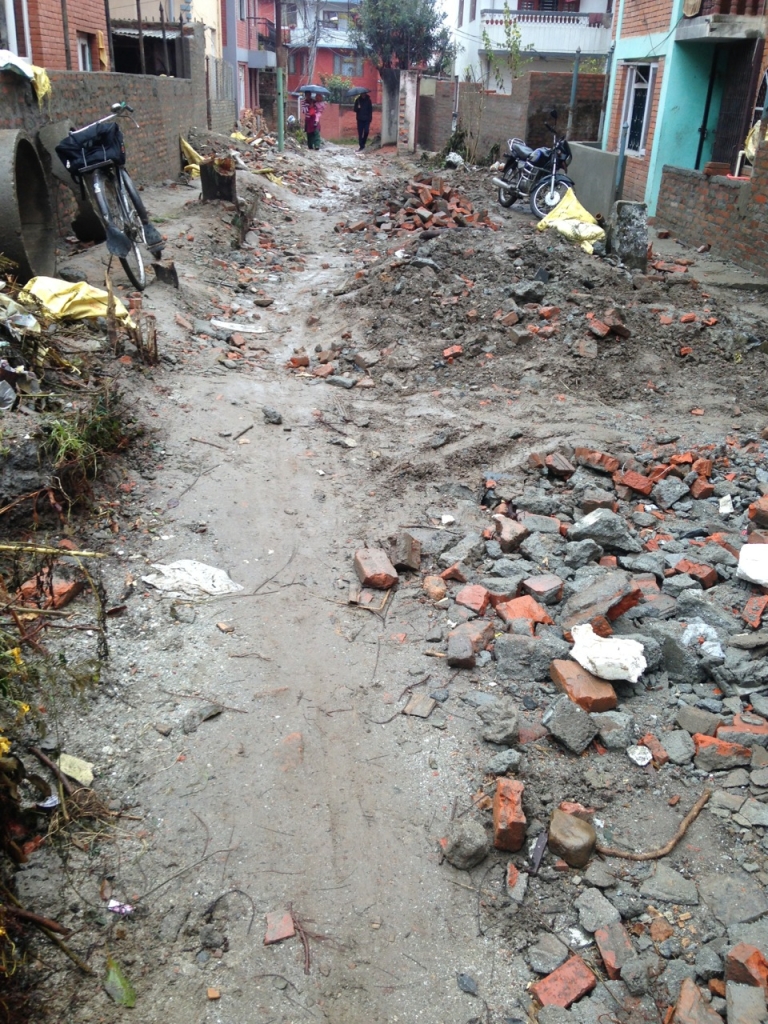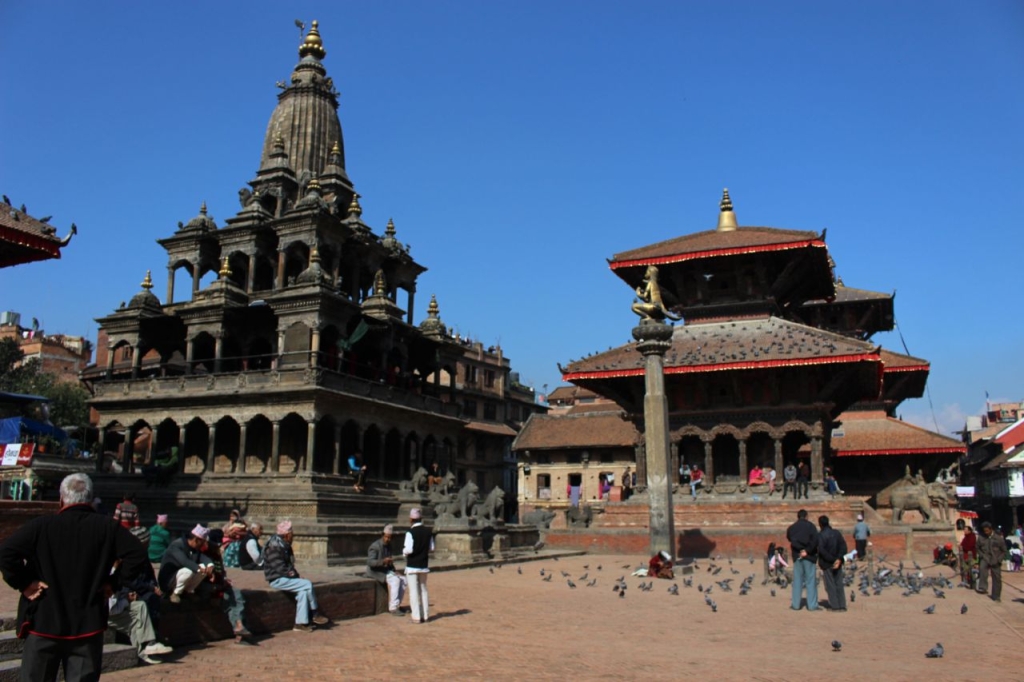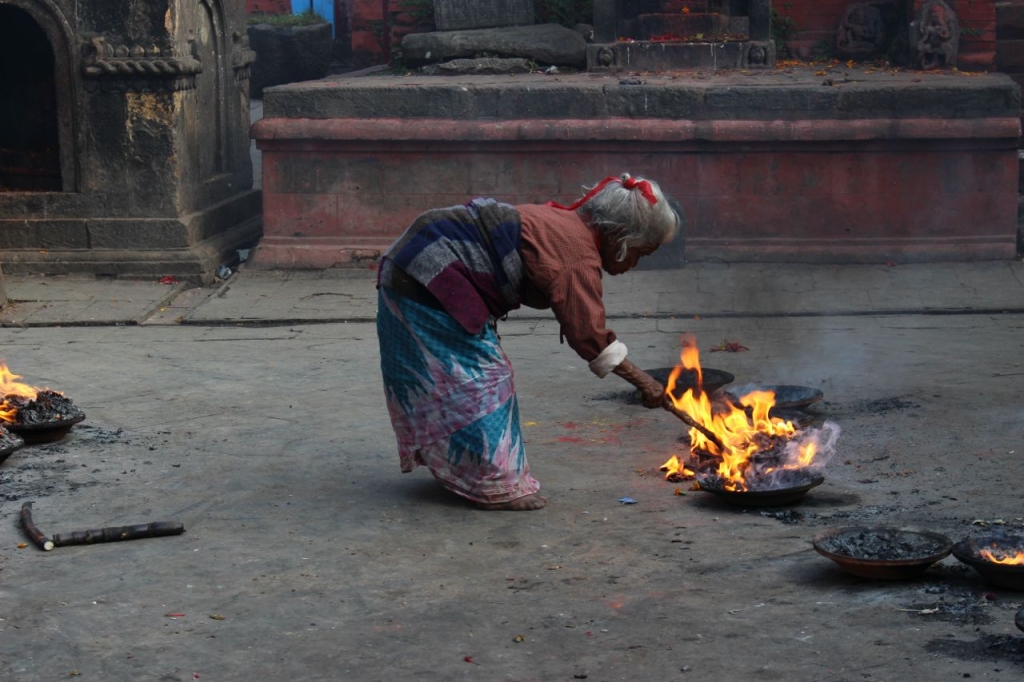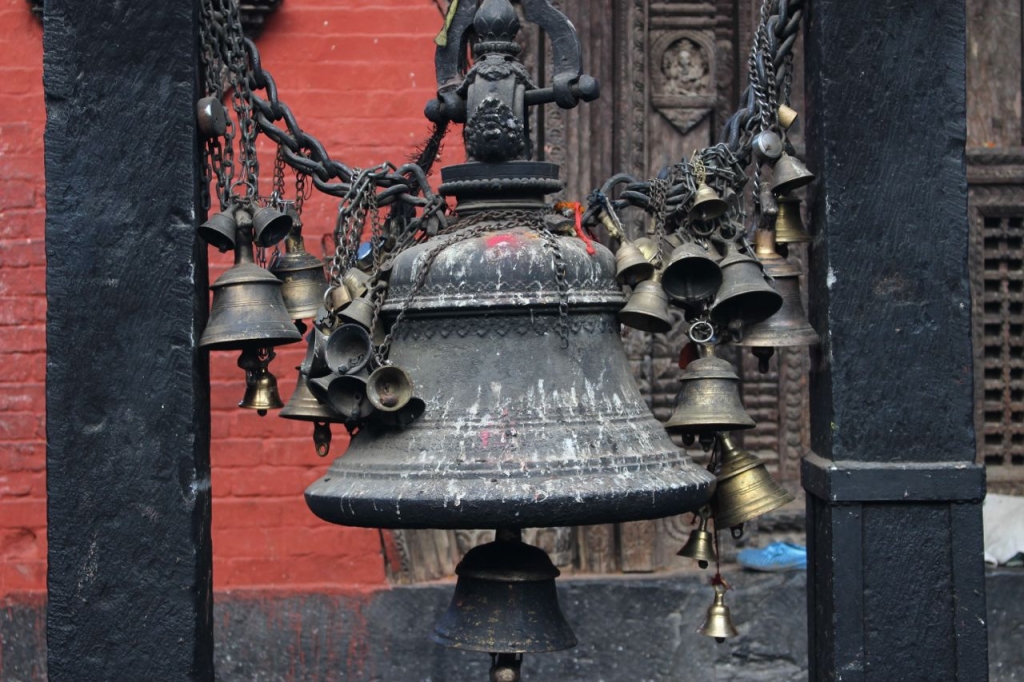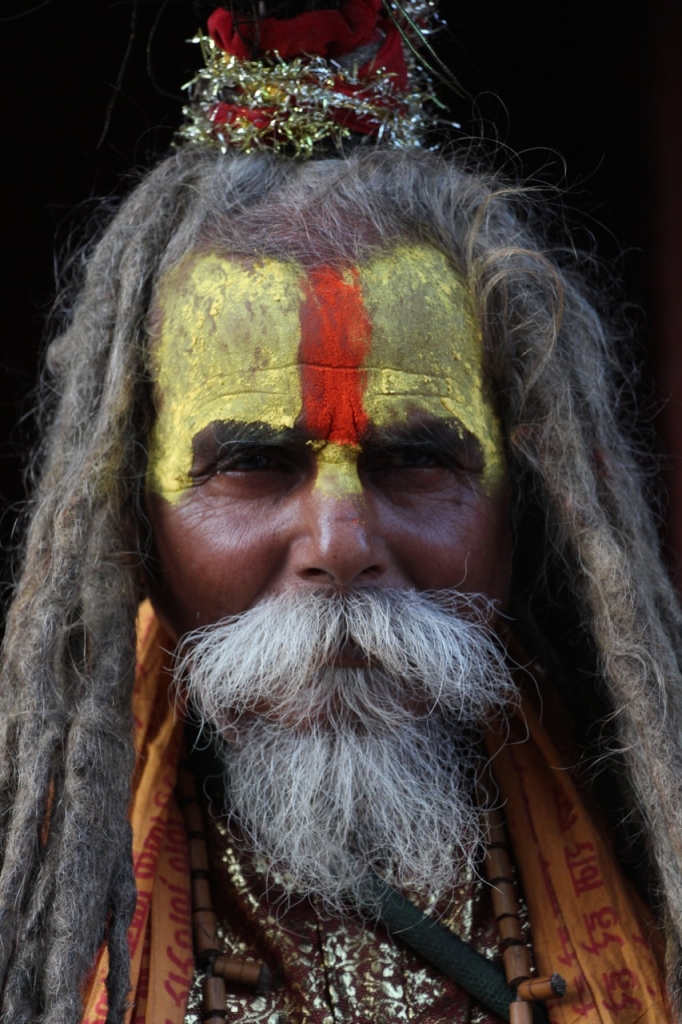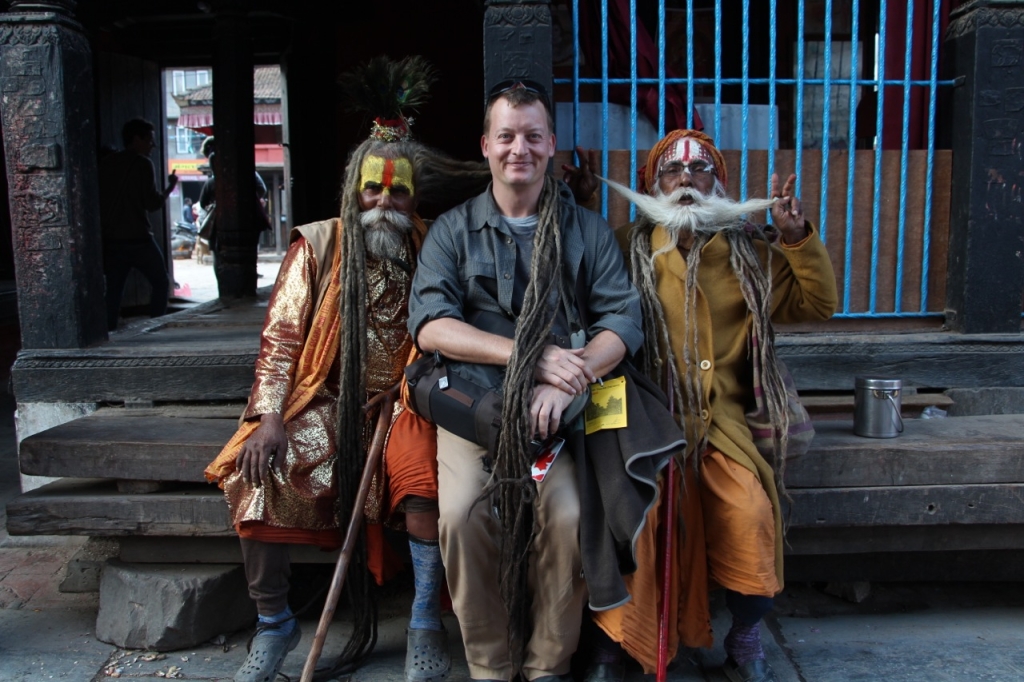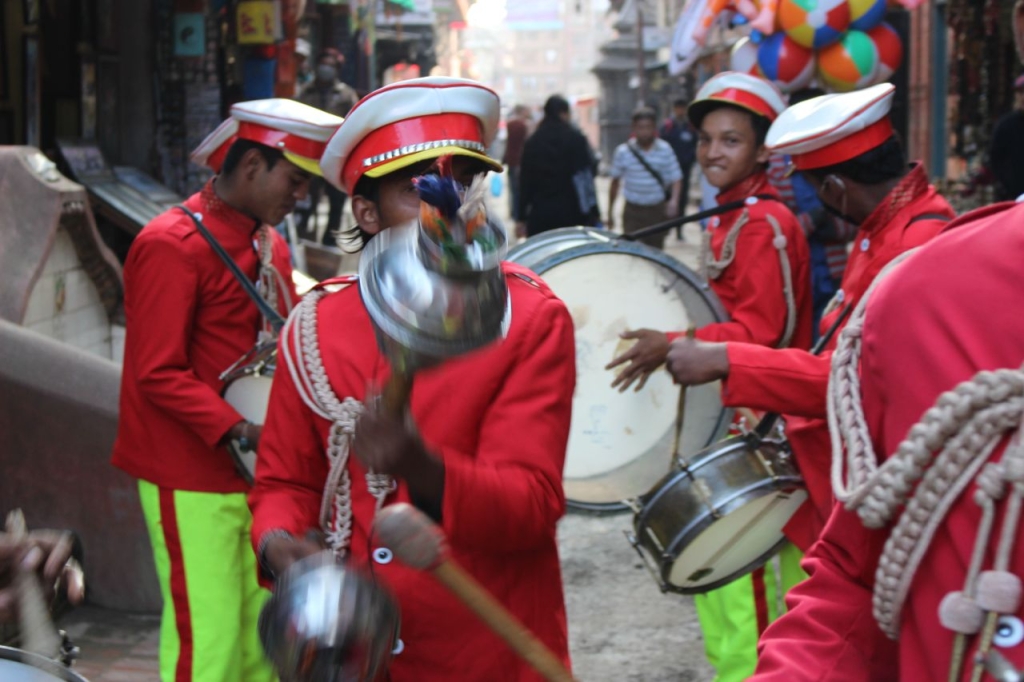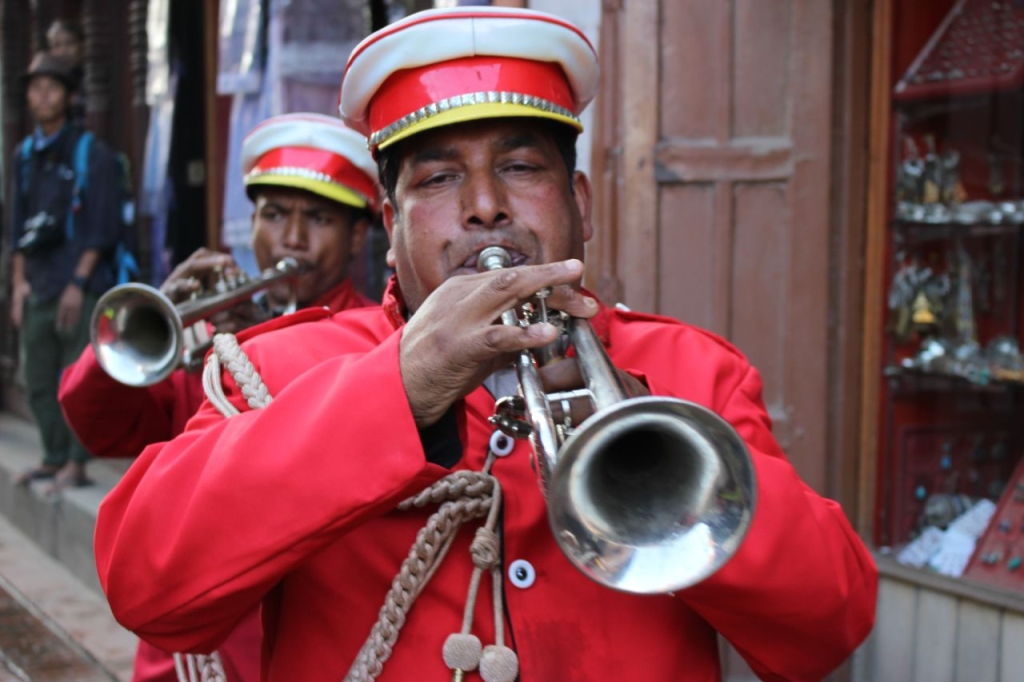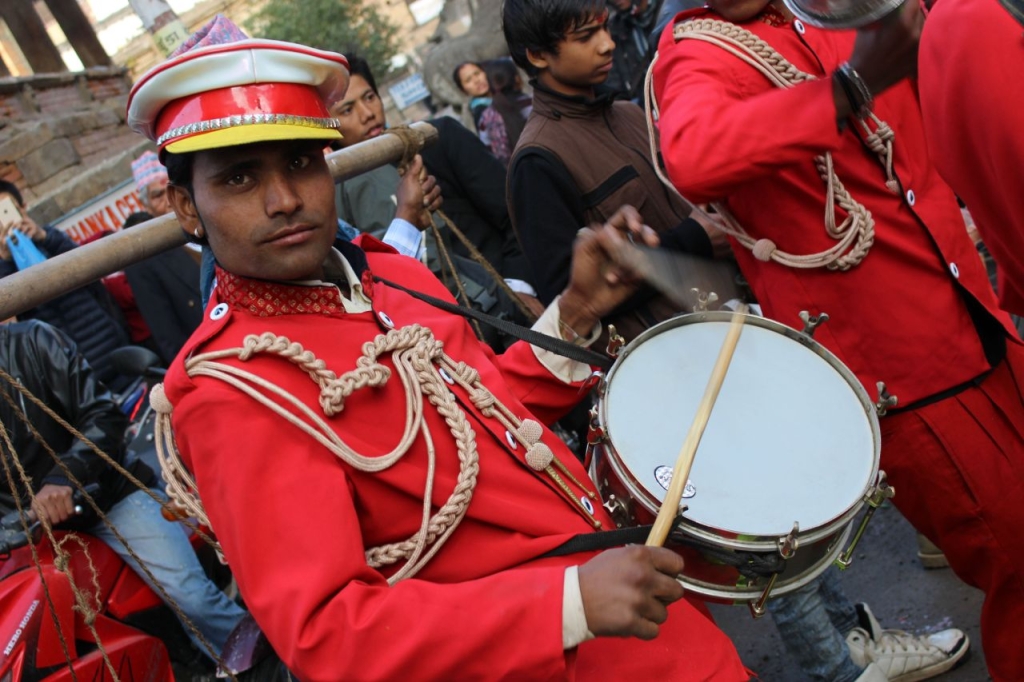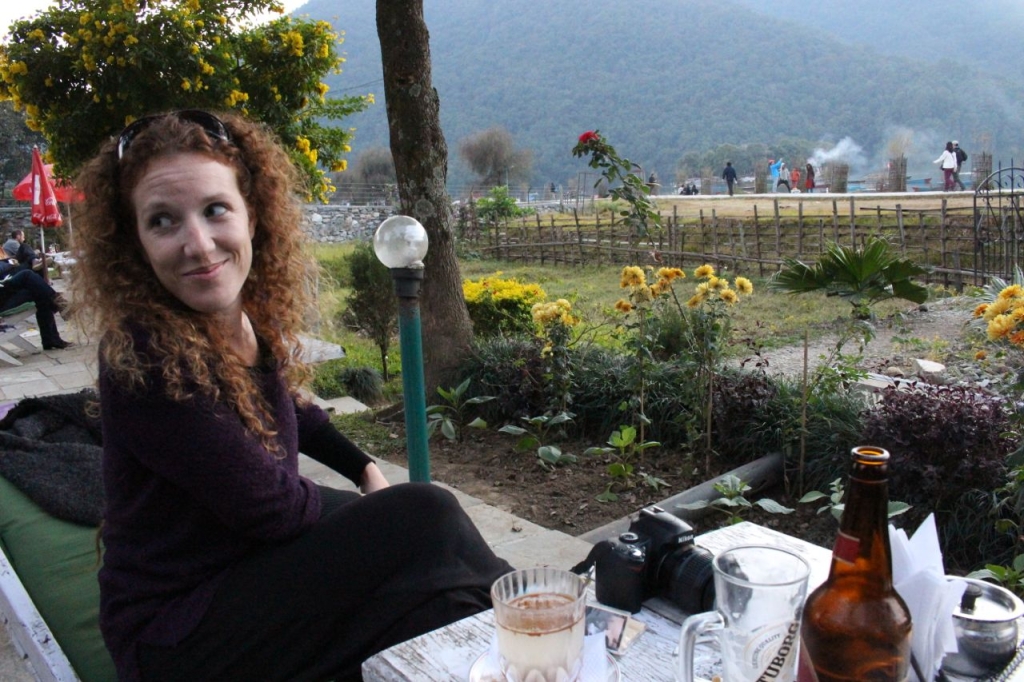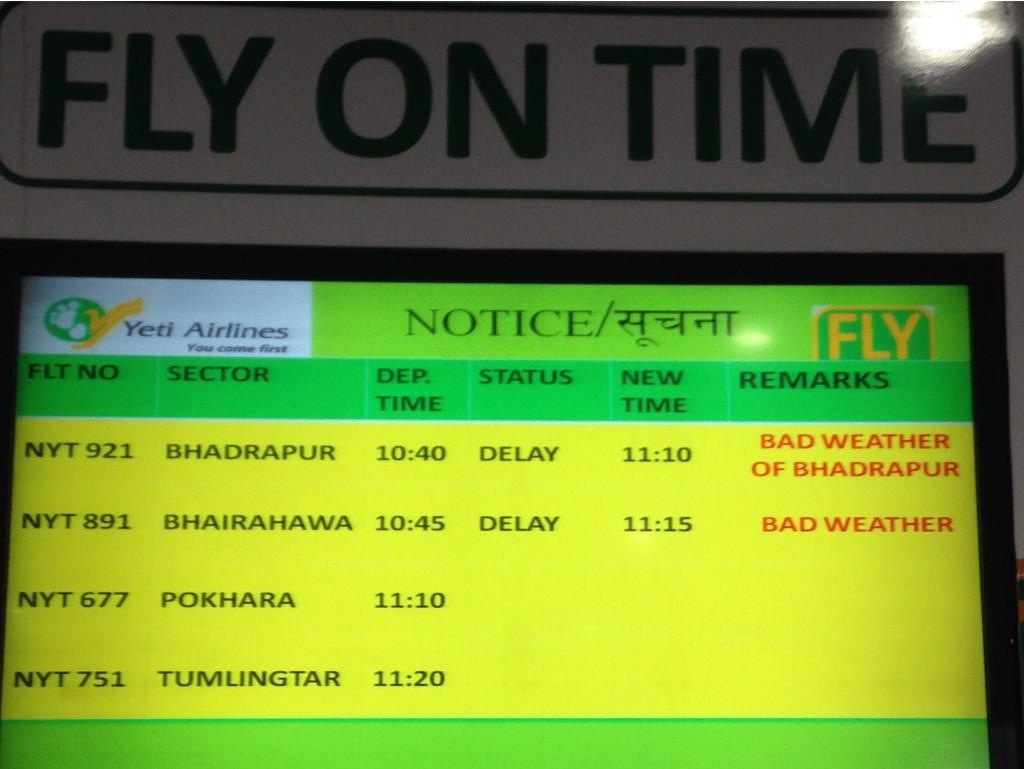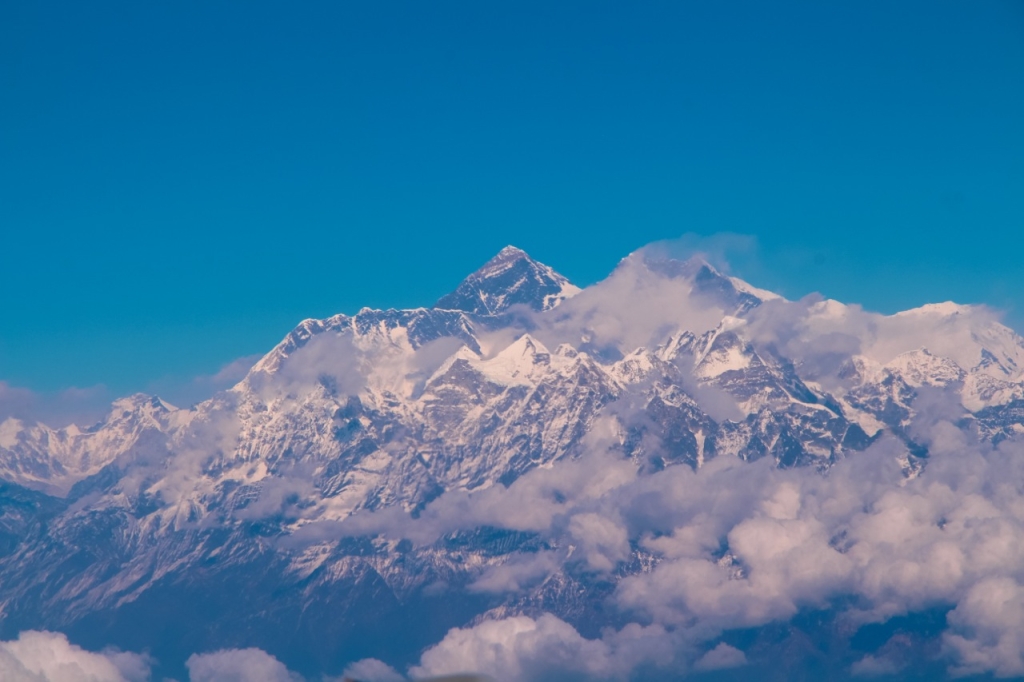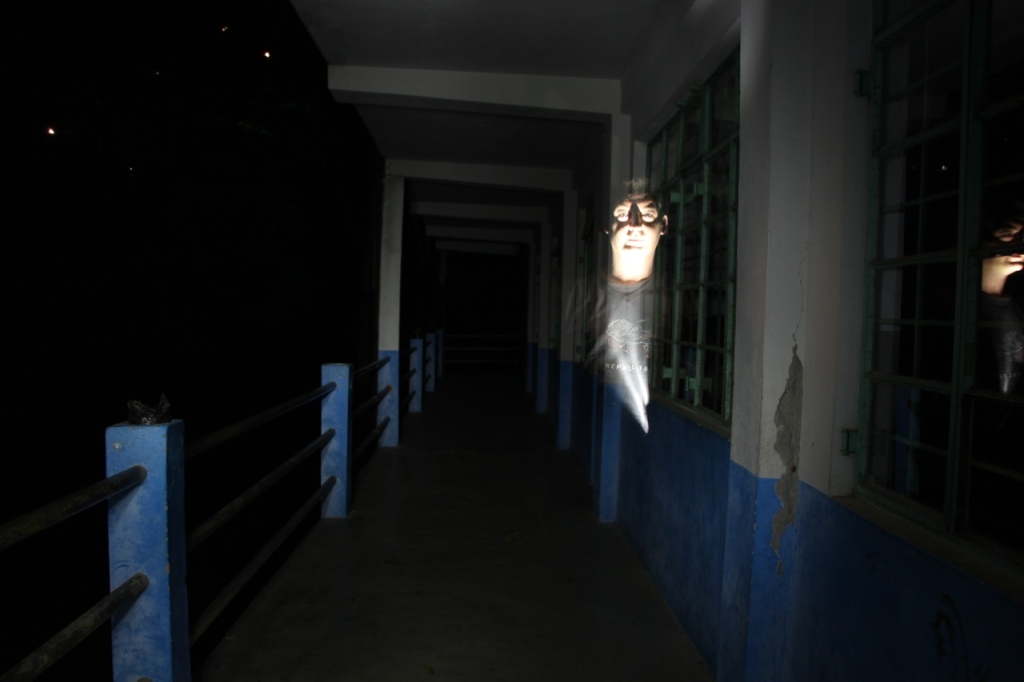Chapter 4: Nepal
Picture Kathmandu, and all sorts of exotic images probably come to mind: majestic mountains, Buddhist temples, and ancient history. You’d be partly right, and you’d see them all eventually… once the smog clears. Kathmandu is one of the world’s most polluted cities: the usual developing-nation issue of dirty engines and energy, multiplied by the valley location which traps it all, means that many Kathmandu citizens die from respiratory failure.
We are met at the airport by our host Dr. Rajat Rai, from the Kathmandu Jazz Conservatory, and after a bronchially-punishing ride through the city, arrive at the KJC for a press conference, held by candlelight. Romantic as it sounds, the candlelight is due to Batti Gayo, or “load shedding:” scheduled rolling blackouts, for a minimum of two four-hour periods each day. Ironically, the blackout schedule can be tracked through your smartphone: when it comes to power outages in Nepal, there’s an app for that.
We check into our guest house: is considerably more modest than expected, and cold. There is occasionally hot water, when the load-shedding isn’t on. Canadians may scoff at the idea of single-digit nights being “cold,” but when the buildings aren’t heated, that cold grabs you and doesn’t leave. We immediately dig into the bottom of our luggage and pull out our sweaters, long underwear, and down jacket. Between the cold, and the Delhi-belly-cold sweats he actually caught in Delhi, Dylan won’t take off the jacket for nearly two weeks. Suba wears five layers. Ed wears his fleecy sweatshirt, and shivers a lot.
Later that night, we go to see Rajat play at Moksh, a nice little club beside the KJC and the guesthouse. People come up to us and introduce themselves: like the Bhopalis, they look us deep in the eye when saying hello. It’s an open mic tonight, and we are invited to give a little musical teaser for our upcoming shows. It’s a lovely night: between the friendly reception, and the spiced rum punch, we are starting to feel warm.
But the travel doesn’t stop. The next morning, we are up at 5:30am for the morning bus to Pokhara. We shiver in the dark morning and wait for our ride, and our travel companion. Albertina is from Spain, and is now the principal of the KJC. She has been here for six months, but has never seen Pokhara, so she’s coming along, for fun, and also to liase with the folks from JJ Sultan, the event organizers who arranged some of our gigs.
Pokhara is 200Km from Kathmandu, but there is no such thing as straight or flat roads in Nepal. The trip takes eight hours. We soar and plummet through the Himalayan foothills…
stopping occasionally for chai and roadside snacks…
… and with two hours of daylight to spare, find ourselves here:
We enjoy the sunset, and have a meal at Trisara, where we will play tomorrow. We chat with the owners, check out the stage, head back to the hotel, and crash.
We have one full day here, so we decide to make it count. First, breakfast at Trisara. The folks at JJ Sultan have arranged some sightseeing for us. First, up high to the World Peace Pagoda…
Next, down low to the Gupteswar Gupha Cave, with gods and goddesses carved along the way down…
Then, to “Davis’ fall.” You’d think it was supposed to be “Davis falls,” after the picturesque waterfall (well, picturesque in the summer. It is dry season, so it’s more of a trickle) but you’d be wrong. This is where a Swiss traveler named Davis fell to her death while swimming.
Next, a boat ride around the lake…
Yes, the woman’s hat reads “Dope.”
Our gig tonight is… interesting. Trisara has only been open for two weeks, so there are a few kinks to work out. First, the folks there don’t quite understand how the sound system works. We get that worked out, more or less. Next is the next-door resort, which plays their ‘indigenous show’ with dancing and loud prerecorded music… during our set. All in all, we make the best of it.
And then, early the next morning, we turn right around and do the 8-hour ride back to Kathmandu. Dylan is in full-fever mode, and spends most of it shivering and sweating in a semiconscious daze. Ed, Suba and Albertina aren’t so lucky: they are stuck behind someone who seems to be either a salesman, or a cokehead (or possibly both) yammering away loudly for the entire trip to anyone around him. Exhausted, we arrive back in Kathmandu.
But it doesn’t stop there: we have a gig, tonight. To expedite the process, Sylvie from the KJC meets us at the bus terminal to grab our gear and whisk it off to the club, House of Music. We head back to our guesthouse to change, grab a quick espresso (the Jazz Conservatory, naturally, has an excellent café. It wouldn’t be jazz without it.) and turn around to head to the club.
House of Music, run by a musician named Sanjay, is another one of those it’s-about-the-music venues we love to play. We have an opening act: Moksha, a Norway/Nepalese fusion band. They are great.
Our gig goes well, and we have a good time chatting with Sanjay and the folks from Moksha. But remember, this is the same day as the 8-hour, feverish, coke-addled-salesman bus ride, and we are exhausted. We make it back to the guesthouse, and sleep like the dead.
At this point, we have been on tour for three weeks, without a single day off. We had originally planned to play at a restaurant. Dylan, who had booked it, was getting a funny vibe that it might not be much of a gig. When we landed in Kathmandu just a few days ago, he asked a few musicians. None was aware that they even had live music. Dylan decided to cancel the gig. It was the right call. We need the downtime, and “load-shedding” enters our vocabulary as a new term for napping.
The next day is a marathon. We have been scheduled for an 8am interview which, mercifully, is also next door to the guesthouse. We arrive at 7:40, and are yanked into the studio of Revolution Radio. The interview starts, and what we assume will be a ten-minute blurb lasts until 9am, with interviews alternating with tracks from our CD.
We have a couple of hours until our next soundcheck, but need this to pack: we have two gigs today, and also have to move to new accommodations in between shows
Next up is the 1pm soundcheck for Gig B, our evening show at the posh Summit Hotel (why so early? We have an afternoon gig elsewhere, and won’t have time to properly soundcheck between Gigs A and B). Though we are under a tight schedule, the tech crew isn’t ready for us, and we scramble to get back to Gig A, an appearance at a fundraiser for the KJC. We make it with minutes to spare, and the gig goes well.
Next… time to switch accommodations. Fortunately, they’re only a few blocks apart, but the term “blocks” (and, for that matter, “roads”) around here is open to interpretation…
And, now it’s raining. We’re in the middle of Kathmandu’s dry season, and while some rain might be expected around January, thanks to global warming’s weather unpredictability, it has arrived weeks early. Everything in Kathmandu has been covered in dust, even the trees. Now, that dust turns to mud. This is bad news for Dylan and his BlundstoNikes, which lasted about 72 hours and are now full of holes again. He covers his feet with shopping bags, and slips them into what remains of his boots.
We get ourselves set up at the new place, and head back to Gig B. It’s still raining, and the show is outside. Not many people show up, but the show goes well, and the equipment stays mostly dry. We return home, exhausted.
We have a workshop the following afternoon, but also have a little time for some sightseeing, after a much-needed sleep-in and a slow breakfast. We finally get to see the parts of Kathmandu you’d expect to see in a brochure, and it’s beautiful. Medieval-era royal buildings…
and a beautiful temple, showing all slices of spiritual life.
On the narrow streets, we see a sombre procession, with stone-faced men and weeping women. It is a funeral. The body is carried high on a stretcher: there is no casket, only a sheet covering the small frame of the deceased, and we wonder if it is a young adult, or even an older child. In the West, we tend to shield ourselves from death, to sanitize it: here, it is more exposed, literally and figuratively.
But, not ten minutes later, we hear loud brass instruments, and see another, more joyous procession: a wedding.
The royal buildings, a temple, a wedding and a funeral, all in the space of a few hours. Kathmandu shows us her beautiful colours, all in one afternoon.
We give a workshop that afternoon to the staff and students at the KJC. They are a curious and musical bunch, and we enjoy our time together.
At this point, it’s worth saying a few words about “momos,” Nepal’s favourite snack food. Dumplings filled with chicken, vegetable paste, or buffalo, they are boiled and sometimes deep-fried: think of Japanese potstickers, and you have a pretty good idea. They can be served alone, or in a soup. But when they are served in a spicy lentil stew, similar to Indian sambar, they become “momocha jol achar,” and nothing takes away the Nepalese cold better than this. During our nine days in Nepal, we probably ate a reasonable portion of the national supply of momos.
The next day is relaxed, with a gig in the evening at the Kathmandu branch of Trisara. We are outdoors and play with our full “Nepalese warmth” clothing. That night, we say goodbye to Albertina, who has become a fast friend over this past week.
We head home to pack for our 6:30 wake-up, and the epic travel day ahead.
* * *
The name “Yeti Airlines” may not inspire confidence in many, and after reviewing its safety record, it probably shouldn’t. But our only other choice was Buddha Air and, as one person remarked to us, the Buddha would probably still be smiling whether or not the plane lands. Yeti it is, then.
Up at 6:30am for the dawntime drive through the streets of Kathmandu which, at this hour, is only semiseverely polluted. We arrive at what we are told is the Kathmandu Domestic terminal, a building that from the outside looks like a deserted army barracks, save for the people filing along a mud path to an unmarked door. We shrug our shoulders, and follow, with our 300 pounds of luggage dragging through the mud.
If only we could take pictures in airports. This one was… memorable. The large “terminal” looks like a 1930s bus stop. No high-tech machines here: airline counters are marked with little ice-cream-stand kiosks, bags are carted away by hand, and trapped birds fly overhead in the glum, underlit building. After the Delhi Incident, we decide to arrive with plenty of time for potential Luggage Bureaucracy. We needn’t have bothered, and we are too early to even check in. We settle in with some tea and snacks, and wait.
When it’s time to go, we encounter the most lax airport protocol we’ve ever come across in the world. We don’t pass through Xrays, or scanners, and our boarding passes have neither names nor seat numbers on them. Before we know it, we’re waiting at the gate for our flight to Bhadrapur. Only this time, we’re waiting an extra two hours: the flight is delayed…
We had noticed this with a number of flights this morning. Fog-plus-Himalaya equals common delays, and apparently in some areas, questionable safety records. But eventually we make it on to the 40-seater turboprop plane, flying across the Himalayan range, passing the Big Daddy himself: Everest.
We land in Bhadrapur to the tiniest airport we’ve experienced: a tarmac, a small outdoor area to claim luggage, and a latrine. Heading now to warmer weather, Dylan bids farewell to his plastic-bag-lined BundstoNikes: it was finally time to let go.
We were met here by a driver an a nice, comfortable van, thanks to Rajat’s planning. About an hour into the trip, we pass over a long bridge, and stop at an office marked “Customs and Excise.” The driver stops into the office, signs something, and we head off. We have our passports ready for inspection, but don’t even leave the car. Apparently, we are now in India, through the most lax border crossing since the good old days of the porous Canada-US border towns.
On we travel, for several hours, up, down and around mountains, until we reach our final destination: the Ghandi Ashram School in Kalimpong. Father Divya, the Jesuit priest who runs the place, meets us and shows us our rooms. Dylan and Suba are upstairs in the main building. Ed is taken, in the dark, down a long, sloping path, to an ominous and abandoned-looking building clinging tenaciously to the side of the mountains. It turns out that this isn’t figurative: the building was a 400-person dormitory, now abandoned as it is now in danger of collapsing as the mountainside it is built on is eroding. Ed is the only person there and, not surprisingly, is a little freaked out.
Nonetheless, at the end of the night, Ed returns to what we now call the “Over-Pong Hotel” (with a nod to Stephen King and Stanley Kubrick), and after whistling in the dark for awhile, eventually falls asleep.
Until he awakes, bolt-upright, at 5am. He has just realized that we are in the country illegally. If we don’t fix this, we just may not get out.
